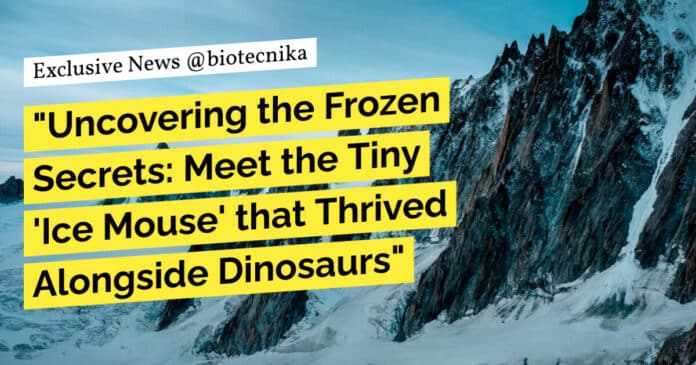Ice Mouse that Thrived Alongside Dinosaurs
Did you know that over 70 million years ago, a miniature rodent-like creature called the Sikuomys mikros, also known as the “ice mouse,” lived in the wintry landscape of Alaska? Despite its small size, this tiny mammal managed to survive alongside the majestic dinosaurs that roamed the land. In this article, we will delve into the fascinating world of the Sikuomys mikros and explore their unique adaptation to the harsh Arctic climate.
The Discovery of the Ice Mouse:
Scientists studying the Prince Creek Formation (PCF) in Alaska, an area rich with dinosaur fossils, made a remarkable discovery. Among the fossils of T.rex and Triceratops relatives, they found teeth as small as sand grains. These tiny teeth, belonging to the Sikuomys mikros, were no larger than 1 to 1.5 millimeters. Unbeknownst to them, they had stumbled upon a new species – the ice mouse.
Unveiling the Ice Mouse:
Finding teeth the size of mustard seeds was no easy feat. Paleontologists meticulously sifted through sediment, washing away dirt particles and examining the remaining debris under a microscope. Through this painstaking process, they identified over a dozen teeth from three different sites, enough to establish the S
. mikros as a distinct species. Interestingly, teeth play a crucial role in identifying mammals in the fossil record.Characteristics and Behavior of the Ice Mouse:
Although the Sikuomys mikros lacks a complete skeletal structure, researchers inferred certain characteristics based on related species. Unlike modern shrews and voles that hibernate during harsh winters, the ice mouse likely overwintered by staying awake and foraging year-round. It possibly hid under leaf litter or underground, feasting on insects and other small invertebrates, such as worms. The absence of larger body masses in the ice mouse suggests that its small size is an evolutionary adaptation to survive the scarcity of food during the winter months.
The discovery of the Sikuomys mikros, or the ice mouse, sheds light on the diverse inhabitants of prehistoric Alaska. These tiny creatures, with teeth smaller than sand grains, coexisted with the dinosaurs in a wintry landscape. Their unique adaptation to the Arctic climate allowed them to thrive amidst the cold and limited food resources. The study of these ancient mammals offers valuable insights into the remarkable diversity of life that existed millions of years ago.
Keywords: Ice Mouse that Thrived Alongside Dinosaurs, Ice mouse, miniature mammal, dinosaur fossils, Alaska, Arctic climate, teeth, adaptation, ancient mammals, prehistoric, diversity of life.



























